Impact opportunities
Identifying where the chemical sector can make the most transformative impact to contribute to the SDGs
The impact opportunities identified fall into five main systemic themes: food, water, people and health, energy, and infrastructure and cities, again underlining the wide-ranging reach of the sector’s influence. Cross-cutting factors have also been identified that relate to a number of impact opportunities. These are human rights, the low carbon economy, circularity, and digitization.
Each of the impact opportunities can be broadly categorized as relating to either product, process, or partnership innovation.
Areas for sector innovation

Key themes and cross-cutting factors

Impact opportunities across key SDGs for the sector


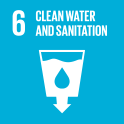
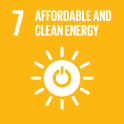
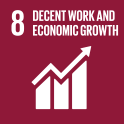
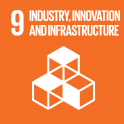
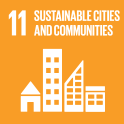
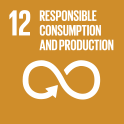


Cross-cutting factors
Human rights
It is important to underline the critical role that corporate respect for human rights has to play in the realization of the ambitions of the SDGs. The 2030 Agenda for Sustainable Development is explicitly grounded in the Universal Declaration of Human Rights, as well as other international instruments. This Roadmap recognizes that a robust commitment by the chemical sector to respect human rights throughout its operations and the entire value chain represents a substantial opportunity to advance human development globally. By proactively implementing the tenets of the UN Guiding Principles on Business and Human Rights and engaging in collaborative initiatives to tackle systemic challenges, companies have the potential to break down significant barriers to development and positively impact the lives of millions of some of the most vulnerable individuals in society – helping to fulfil the central commitment of the SDGs of leaving no one behind.
Low carbon economy
Combating climate change and transforming the energy system are core challenges on the path to a sustainable future for business, society and the environment. The Paris Agreement has sent a decisive and global signal that the start of the transition to a thriving, clean economy is inevitable and irreversible. SDG 7 (Affordable and Clean Energy) and SDG 13 (Climate Action) are clearly linked to a low carbon economy; however, the success of many other goals will require this transformative shift as well.
The chemical sector is a major energy user but has also made significant progress to decouple economic growth from carbon emissions. Additional efficiency gains are becoming more difficult to realize, but the sector has the potential to thrive in an economy based on low carbon power sources that minimize carbon dioxide emissions.
The chemical sector is also a critical low carbon solutions provider, serving as a catalyst for helping to improve energy efficiency and reduce greenhouse gas emissions across multiple value chains. Chemical products are a building block in fully realizing the potential of renewable and innovative energy sources to enable all industry sectors to drive towards a low carbon economy.
Circularity
If current trends continue, global demand for resources is expected to reach 130 billion tons by 2050, up from 50 billion in 2014, representing an overuse of the Earth’s total capacity by more than 400%. The global economy is only 9% circular.
Closing the gap will help to prevent further and accelerated environmental degradation, as well as safeguarding against future resource scarcity. Circular business models can help decouple growth from resource use, allowing economic development to continue within planetary boundaries.
The chemical sector will play a central role in enabling the circular economy by developing new products, encouraging eco-efficient use of materials and resources and through collaboration with others in researching effective raw materials recovery from waste streams to facilitate the cycling of molecules. Carbon is often the focus of circular conversations, but nitrogen and phosphorous also require fundamental changes to overcome the status quo in order to be more sustainable. Achieving circularity is challenging and reliant on sufficient clean and renewable power being available as well as on a supporting policy environment which helps to reduce the costs of reusing and recovering waste.
Digitization
Chemicals 4.0 – the sector-specific reference to the fourth industrial revolution – describes how the chemical sector is being transformed at all stages of the value chain to integrate and optimize digital, physical and biological advancements. This includes a broad range of concepts based on having a deep understanding of how to meet customer needs in a world that is digitally connected across the value chain, from raw materials to operations, customers and communities.
With the emergence of Chemicals 4.0 come threats to and opportunities for achieving the SDGs. If significant jobs are lost through technological innovations, it could hamper efforts to reduce poverty, hunger, and inequality as well as finance improvements to the environment, healthcare and infrastructure. At the same time, innovations may create new types of jobs while providing technical solutions to some of the most critical social, environmental and economic issues facing the planet. The challenge for the chemicals sector is to identify, understand and leverage technological transformation in a manner that mitigates negative consequences and optimizes society’s ability to achieve the SDGs.
 Food
Food
Some 795 million people in the world – about one in nine – do not have enough food to lead a healthy active life. The vast majority of the world’s hungry live in developing countries, where some 13% of the population is undernourished. Food insecurity, famine, and nutrient deficiency co-exist with obesity, rising food-related lifestyle diseases (including diabetes) and food waste. Food production suffers from – and also contributes to – climate change, water stress, and many interrelated socio-economic issues.
Key SDGs impacted




Impact opportunity 1:
Contribute to sustainable and healthy food supply
Chemistry is fundamental to the global food value chain, enabling higher yields, longer shelf lives, and improved nutrition. The chemical sector will innovate, invest, and share knowledge to help increase the productivity of farmers in its supply chain and wider communities. Companies can also lead by improving access to healthy foods where they are needed most and by developing fortified crops and processed foods that are compatible with development goals for human and environmental health.
Prioritized SDGs: 2, 12
Targets:
2.1 By 2030, end hunger and ensure access by all people in particular the poor and people in vulnerable situations, including infants, to safe, nutritious and sufficient food all year round
2.4 By 2030, ensure sustainable food production systems and implement resilient agricultural practices that increase productivity and production, that help maintain ecosystems, that strengthen capacity for adaptation to climate change, extreme weather, drought, flooding and other disasters and that progressively improve land and soil quality

12.3 By 2030, halve per capita global food waste at the retail and consumer levels and reduce food losses along production and supply chains, including post-harvest losses
Impact opportunity 2:
Transform food packaging to prevent food loss and waste
To combat the significant global food waste problem, the chemical sector is leading the development of technologies and products to transform food packaging to reduce food waste and enable better food availability to communities around the world.
Opportunities to scale solutions and further innovate to offer tremendous potential to substantially reduce food waste, as well as reduce plastic packaging waste; a significant cause of marine pollution. Innovative partnerships to transform consumer behavior and advance waste management infrastructure will be key.
Prioritized SDGs: 2, 9, 12, 14
Targets:
2.1 By 2030, end hunger and ensure access by all people, in particular, the poor and people in vulnerable situations, including infants, to safe, nutritious and sufficient food all year round
2.a Increase investment, including through enhanced international cooperation, in rural infrastructure, agricultural research and extension services, technology development and plant and livestock gene banks in order to enhance agricultural productive capacity in developing countries, in particular least developed countries
9.1 Develop quality, reliable, sustainable and resilient infrastructure, including regional and trans-border infrastructure, to support economic development and human well-being, with a focus on affordable and equitable access for all

12.5 By 2030, substantially reduce waste generation through prevention, reduction, recycling and reuse
14.1 By 2025, prevent and significantly reduce marine pollution of all kinds, in particular from land-based activities, including marine debris and nutrient pollution
Impact opportunity 3:
Transform food additives to combat malnutrition
The chemical sector has a long track record of being an innovative solution provider for societal challenges related to health and nutrition, where safety is of paramount importance. Food additives rely on chemistry to maintain or enhance nutrient composition, as well as to improve food shelf life and taste/texture. The opportunity to understand different nutrition gaps at a regional level and how chemistry can help fill those through innovative food solutions has the potential to make a significant impact towards ending malnutrition.
Prioritized SDGs: 2
2.2 By 2030, end all forms of malnutrition, including achieving, by 2025, the internationally agreed targets on stunting and wasting in children under 5 years of age, and address the nutritional needs of adolescent girls, pregnant and lactating women and older persons
 Water
Water
The SDGs call for universal access to safe and affordable drinking water for all by 2030. According to the World Health Organization, 2.1 billion people lacked access to safely managed drinking-water services in 2015.
The chemical sector offers innovative solutions that can help achieve universal access to water, by improving water treatment technology, preventing loss in distribution systems, and sharing best practices for water stewardship and wastewater management.
product innovation, the chemical sector can play an important role in protecting our oceans.
Key SDGs impacted






Impact opportunity 4:
Increase resilience for water pipes and systems
The chemical sector offers innovative piping solutions to improve resilience and reduce water loss through transport, which is one of most common ways water is lost from a system. This is an opportunity for the sector to utilize its own products to prevent water loss in operations and supply chains as well as scale efforts to transform water and wastewater distribution networks.
Prioritized SDGs: 6, 9
Targets:
6.1 By 2030, achieve universal and equitable access to safe and affordable drinking water for all
6.2 By 2030, achieve access to adequate and equitable sanitation and hygiene for all and end open defecation, paying special attention to the needs of women and girls and those in vulnerable situations
9.1 Develop quality, reliable, sustainable and resilient infrastructure, including regional and transborder infrastructure, to support economic development and human well-being, with a focus on affordable and equitable access for all
9.4 By 2030, upgrade infrastructure and retrofit industries to make them sustainable, with increased resource-use efficiency and greater adoption of clean and environmentally sound technologies and industrial processes, with all countries taking action in
accordance with their respective capabilities

Impact opportunity 5:
Improve urban water treatment capabilities through focused research and innovation to accelerate breakthrough technology development
Water use and demand is growing rapidly. Common treatment technologies for reusing and recycling water include biological processes, membrane filtration and separation, and chemical oxidation processes – mostly continuous electrodeionization (CEDI), ultraviolet (UV) and ozone-based systems. The chemical sector plays an important role in scaling current technologies and working in partnerships to make the technology more accessible and affordable to the markets that need them most.
Prioritized SDGs: 6, 9, 11, 13
6.3 By 2030, improve water quality by reducing pollution, eliminating dumping and minimizing the release of hazardous chemicals and materials, halving the proportion of untreated wastewater and substantially increasing recycling and safe reuse globally
6.a By 2030, expand international cooperation and capacity-building support to developing countries in water- and sanitation-related activities and programmes, including water harvesting, desalination, water efficiency, wastewater treatment, recycling and reuse technologies
9.1 Develop quality, reliable, sustainable and resilient infrastructure, including regional and trans-border infrastructure, to support economic development and human well-being, with a focus on affordable and equitable access for all
9.5 Enhance scientific research, upgrade the technological capabilities of industrial sectors in all countries, in particular developing countries, including, by 2030, encouraging innovation and substantially increasing the number of research and development workers per 1 million people and public and private research and development spending

11.5 By 2030, significantly reduce the number of deaths and the number of people affected and substantially decrease the direct economic losses relative to global gross domestic product caused by disasters, including water-related disasters, with a focus on protecting the poor and people in vulnerable situations
13.1 Strengthen resilience and adaptive capacity to climate-related hazards and natural disasters in all countries
Impact opportunity 6:
Accelerate water stewardship
The chemical sector is a large water user and has the opportunity to have impact by sharing best practices and consistently applying catchment area management concepts to water stewardship. Water scarcity and competition for water resources is a business risk for the chemical sector. Increased water demand from people, agriculture, energy and industry endangers water supply security and has the potential to disrupt business operations.
Prioritized SDGs: 6, 9, 11, 12, 14
Targets:
6.4 By 2030, substantially increase water-use efficiency across all sectors and ensure sustainable withdrawals and supply of freshwater to address water scarcity and substantially reduce the number of people suffering from water scarcity
6.5 By 2030, implement integrated water resources management at all levels, including through transboundary cooperation as appropriate
9.1 Develop quality, reliable, sustainable and resilient infrastructure, including regional and transborder infrastructure, to support economic development and human well-being, with a focus on affordable and equitable access for all
11.3 By 2030, enhance inclusive and sustainable urbanization and capacity for participatory, integrated and sustainable human settlement planning and management in all countries

12.6 Encourage companies, especially large and transnational companies, to adopt sustainable practices and to integrate sustainability information into their reporting cycle
14.1 By 2025, prevent and significantly reduce marine pollution of all kinds, in particular from land-based activities, including marine debris and nutrient pollution
14.2 By 2020, sustainably manage and protect marine and coastal ecosystems to avoid significant adverse impacts, including by strengthening their resilience, and take action for their restoration in order to achieve healthy and productive oceans
Impact opportunity 7
Work with others in the value chain on aquatic waste issues (including ocean plastic)
The chemical sector’s role in addressing the issue of ocean pollution is imperative. Managing and reducing ocean waste will require a multitude of actions and involvement of the entire value chain. The sector can provide leadership in product design and work with governments and stakeholders for on-land solutions that incentivize proper collection and enable a circular economy.
Prioritized SDGs: 6, 14
6.3 By 2030, improve water quality by reducing pollution, eliminating dumping and minimizing release of hazardous chemicals and materials, halving the proportion of untreated wastewater and substantially increasing recycling and safe reuse globally
6.a By 2030, expand international cooperation and capacity-building support to developing countries in water- and sanitation-related activities and programmes, including water harvesting, desalination, water efficiency, wastewater treatment, recycling and reuse technologies

14.1 By 2025, prevent and significantly reduce marine pollution of all kinds, in particular from land-based activities, including marine debris and nutrient pollution
14.2 By 2020, sustainably manage and protect marine and coastal ecosystems to avoid significant adverse impacts, including by strengthening their resilience, and take action for their restoration in order to achieve healthy and productive oceans
 People and health
People and health
Nearly all the SDGs directly or indirectly contribute to human health. The World Health Organization estimates that the benefits of investing in health systems to achieve the SDG health-related targets by 2030 include up to 8.4 additional years of life expectancy and the prevention of 97 million premature deaths.
Chemistry makes significant contributions to advancing human health benefits as a key enabler in the development of medicines, clean water, and more efficient agriculture. The sector is well positioned to make health contributions through product innovation in these and other areas, as well as through continued efforts to reduce potential health impacts of the sector’s own operations through improvement and capacity building at an international scale.
Key SDGs impacted



Impact opportunity 8
Transform portfolios to have more products with positive impacts on health and people
There are three explicit references to chemicals in the SDGs: target 3.9 related to reducing the number of deaths and illnesses from hazardous chemicals; 6.3 related to improving water quality and eliminating dumping of hazardous chemicals; and 12.4 achieving environmentally sound management of chemicals throughout their lifecycle. Successfully managing the risks derived from the misuse of chemicals is the fundamental health, safety and environmental mission of the industry. However, the chemical sector can also leverage its expertise, resources, and knowledge in product innovation to better understand, monitor, mitigate, and remediate negative impacts on health and transform business models to focus on the growth of product portfolios that provide benefits to people and health.
Prioritized SDGs: 3, 12
3.9 By 2030, substantially reduce the number of deaths and illnesses from hazardous chemicals and air, water, and soil pollution and contamination
12.4 By 2020, achieve the environmentally sound management of chemicals and all wastes throughout their life cycle, in accordance with agreed international frameworks, and significantly reduce their release to air, water and soil in order to minimize their adverse impacts on human health and the environment

Impact opportunity 9
Reduce impact of operations to people
The sector’s own operations and supply chain can have direct negative impacts on people; from labor issues through to pollution in local communities, to health and safety standards on the work floor. Sector leaders and industry associations have an important role to play in promoting the adoption of practices that protect the safety and human rights of workers throughout the value chain as well as local communities and society as a whole. Ensuring corporate respect for human rights, founded on robust due diligence processes, is critical for achieving the vision of the inclusive future that sits at the heart of the SDG agenda.
Prioritized SDGs: 3, 8
3.9 By 2030, substantially reduce the number of deaths and illnesses from hazardous chemicals and air, water and soil pollution and contamination
8.7 Take immediate and effective measures to eradicate forced labor, end modern slavery and human trafficking and secure the prohibition and elimination of the worst forms of child labor, including recruitment and use of child soldiers, and by 2025 end child labor in all its forms
8.8 Protect labor rights and promote safe and secure working environments for all workers, including migrant workers, in particular women migrants, and those in precarious employment

Impact opportunity 10
International chemical industry scientific and technological capacity building
Prioritized SDGs: 3, 8, 12
3.9 By 2030, substantially reduce the number of deaths and illnesses from hazardous chemicals and air, water and soil pollution and contamination
8.4 Improve progressively, through 2030, global resource efficiency in consumption and production and endeavor to decouple economic growth from environmental degradation, in accordance with the 10‑Year Framework of Programmes on Sustainable Consumption and Production, with developed countries taking the lead
12.a Support developing countries to strengthen their scientific and technological capacity to move towards more sustainable patterns of consumption and production
 Energy
Energy
SDG 7 calls for access to affordable, reliable, sustainable and modern energy for all by 2030. Yet today one in five people lack access to modern electricity, posing a significant barrier to development and hindering progress across a wide range of SDG goals and targets.
The chemical sector has an important role to play in the transition towards a low carbon society as a provider of products and technologies used in energy saving and renewable energy applications. These include applications for fuel cells, solar cells, batteries, nanostructured materials, and carbon capture, among others. Nearly all renewable energy
To fulfill this energy-saving role and to reduce the sector’s own energy use, the focus of the sector should include: identifying new catalysts and process-related opportunities; accelerating R&D and capital investments that improve energy efficiency; facilitating
the advancement of game-changing innovations with partners by lowering barriers and operating costs; and promoting global and regional cooperation on reducing energy and emissions.
Key SDGs impacted



Impact opportunity 11
Accelerate energy efficiency in downstream sectors
Chemical products and technologies are used in a wide array of energy saving applications and the industry plays an important role in enabling the savings of GHG emissions through its application in many sectors (e.g. insulation, efficient lighting, lighter materials for automobiles and advanced materials for renewable technologies). Close collaboration with customers to identify needs and innovate products will help accelerate energy efficiency in downstream sectors.
Prioritized SDGs: 7, 12, 13
7.3 By 2030, double the global rate of improvement in energy efficiency
12.2 By 2030, achieve the sustainable management and efficient use of natural resources
13.1 Strengthen resilience and adaptive capacity to climate-related hazards and natural disasters in all countries

Impact opportunity 12
Enable production and storage of renewable energy/renewable energy infrastructure
The chemical sector has an important role to play in the energy transition beyond 2030. It provides key materials to renewable power generation systems, including gear oils for wind turbine gearboxes, resins for blades and coating materials for wind turbines, and silicon ingots, semiconductor gas and sealant for solar PV panels. The sector should continue to push the boundaries of innovation and support research to develop new products that will make renewable energy more affordable, reliable and accessible.
Prioritized SDGs: 7, 13
7.2 By 2030, increase substantially the share of renewable energy in the global energy mix
7.3 By 2030, double the global rate of improvement in energy efficiency
13.1 Strengthen resilience and adaptive capacity to climate-related hazards and natural disasters in all countries

Impact opportunity 13
Continue to improve energy efficiency in own processes
The chemical and petrochemical sector is the largest industrial energy user, accounting for approximately 10% of total worldwide final energy demand and 7% of global GHG emissions. Basic chemicals are among the most energy-intensive manufacturing industries in the world. Continuous improvement to realize energy efficiency is normal business practice in the chemical sector, but the sector can collaborate to make best practice more affordable and accessible to all companies including SMEs and chemical companies in emerging and developing markets.
Prioritized SDGs: 7, 13
7.3 By 2030, double the global rate of improvement in energy efficiency
7.a By 2030, enhance international cooperation to facilitate access to clean energy research and technology, including renewable energy, energy efficiency and advanced and cleaner fossil-fuel technology, and promote investment in energy infrastructure and clean energy technology
12.4 By 2020, achieve the environmentally sound management of chemicals and all wastes throughout their life cycle, in accordance with agreed international frameworks, and significantly reduce their release to air, water and soil in order to minimize their adverse impacts on human health and the environment
12.6 Encourage companies, especially large and transnational companies, to adopt sustainable practices and to integrate sustainability information into their reporting cycle
13.1 Strengthen resilience and adaptive capacity to climate-related hazards and natural disasters in all countries
Impact opportunity 14
Breakthrough technologies for alternative production processes
The climate and energy efficiency ambitions of the SDGs require a significant change in current business models. Research programs should focus on achieving improvements to further the commercial viability of proven breakthrough technologies. Key implementation barriers of availability of low carbon energy, availability of alternative feedstock, and the significant CAPEX and lead times involved in new manufacturing infrastructure will need to be considered and addressed through innovative public-private partnerships. The chemical sector is a critical actor in this process and has the potential to drive ground-breaking innovation.
Prioritized SDGs: 7, 13
7.3 By 2030, double the global rate of improvement in energy efficiency
7.a By 2030, enhance international cooperation to facilitate access to clean energy research and technology, including renewable energy, energy efficiency and advanced and cleaner fossil-fuel technology, and promote investment in energy infrastructure and clean energy technology
13.1 Strengthen resilience and adaptive capacity to climate-related hazards and natural disasters in all countries

Impact opportunity 15
Increase proportion of renewable energy or innovative energy technologies used in production
The production of chemical sector products is energy intensive. Even small shifts in energy mixes can have significant impact given the scale of the industry. The sector has the potential to generate significant SDG impacts through collaborative efforts to address region-specific barriers slowing the advancement and uptake of renewable energy use.
Prioritized SDGs: 7, 13
7.3 By 2030, double the global rate of improvement in energy efficiency
13.1 Strengthen resilience and adaptive capacity to climate-related hazards and natural disasters in all countries
 Infrastructure and cities
Infrastructure and cities
Quality infrastructure goes hand-in-hand with achieving the SDGs. Without adequate infrastructure, people lack access to markets, jobs, information, health care, training, and education. The chemical sector contributes to infrastructure improvements in several ways: through innovations integral to the life cycle of products used in buildings, power, water, sewer, communications, and transportation; and in collaborating with others to help improve living standards.
The chemical sector has a strong history of working together and with others. This spirit of collaboration provides opportunities for more innovative and resilient infrastructure development. Chemical companies can collaborate with governments and others to develop public-private partnerships for infrastructure investment, implement local procurement and employment initiatives, support education and community-based programs and incorporate sustainability features across the life cycle of capital projects.
Key SDGs impacted





Impact opportunity 16
Scale and evolve involvement in multi-stakeholder collaboration to make cities more sustainable and inclusive, improving lives of the urban poor
Today, more than half of the world’s population live in cities and more than two-thirds will do so by 2050. The chemical sector has an opportunity to scale the use of products that support more sustainable buildings and lifestyles while also exploring business opportunities around the development of more inclusive markets. It is estimated that affordable housing solutions alone could open up market opportunities in excess of one trillion US dollars per year by 2030, representing a significant opportunity for the chemical sector as a key solutions provider
Prioritized SDGs: 3, 11
3.9 By 2030, substantially reduce the number of deaths and illnesses from hazardous chemicals and air, water, and soil pollution and contamination
11.6 By 2030, reduce the adverse per capita environmental impact of cities, including by paying special attention to air quality and municipal and other waste management
11.c Support least developed countries, including through financial and technical assistance, in building sustainable and resilient buildings utilizing local materials

Impact opportunity 17
Demonstrate benefits of industrial symbiosis
Chemical hubs are a well-established concept in many regions and provide opportunity by helping reduce raw material and waste disposal costs, earning new revenue from residues and by-products, supporting circular business models, and developing new business opportunities. Best practice principles that enable industrial symbiosis in the chemical sector – and with peers in other sectors – can be deployed at a far greater scale to help address feedstock availability issues and improve resource management in a cost-effective manner.
Prioritized SDGs: 9, 11, 12, 13
Targets:
9.4 By 2030, upgrade infrastructure and retrofit industries to make them sustainable, with increased resource-use efficiency and greater adoption of clean and environmentally sound technologies and industrial processes, with all countries taking action in accordance with their respective capabilities
11.3 By 2030, enhance inclusive and sustainable urbanization and capacity for participatory, integrated and sustainable human settlement planning and management in all countries
11.6 By 2030, reduce the adverse per capita environmental impact of cities, including by paying special attention to air quality and municipal and other waste management

12.2 By 2030, achieve the sustainable management and efficient use of natural resources
12.4 By 2020, achieve the environmentally sound management of chemicals and all wastes throughout their life cycle, in accordance with agreed international frameworks, and significantly reduce their release to air, water and soil in order to minimize their adverse impacts on human health and the environment
13.1 Strengthen resilience and adaptive capacity to climate-related hazards and natural disasters in all countries
Impact opportunity 18
Strengthen production assets to promote resiliency
The chemical sector is known for its ability to adapt, but there is a need to improve approaches to promote resiliency for the industry’s own assets and supply chains. Many chemical companies do not yet have strategies to understand and manage climate risks, which can create enormous financial and operational exposures. Best practices to assess and manage resiliency already exist and leading chemical companies are well versed in their application. The opportunity for the sector is to share, build capacity and encourage more consistent application of these methods to adapt and improve resiliency.
Prioritized SDGs: 9, 11, 13
9.4 By 2030, upgrade infrastructure and retrofit industries to make them sustainable, with increased resource-use efficiency and greater adoption of clean and environmentally sound technologies and industrial processes, with all countries taking action in accordance with their respective capabilities
11.6 By 2030, reduce the adverse per capita environmental impact of cities, including by paying special attention to air quality and municipal and other waste management


Copyright © 2021
World Business Council
for Sustainable Development
All rights reserved
Privacy Policy
Follow us
Contact
MAISON DE LA PAIX
Chemin Eugène-Rigot, 2B
Case Postale 2075
CH-1211, Geneva 1
Switzerland
Tel: +41 (22) 839 3100
Fax: +41 (22) 839 3131

























